Features
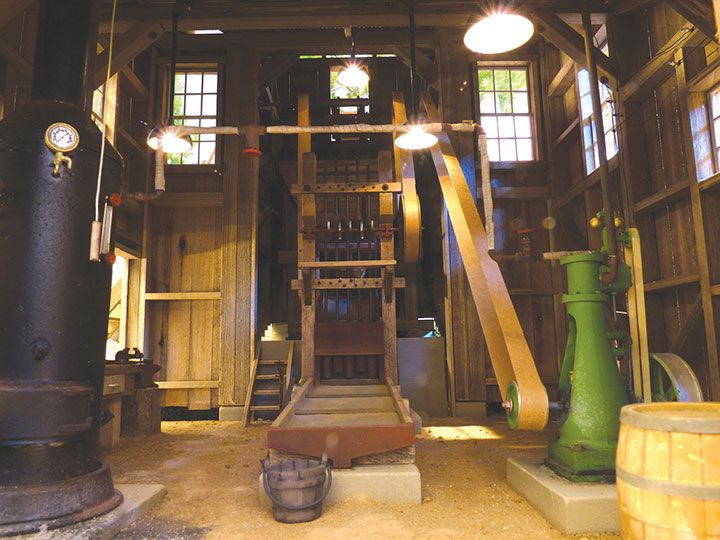
A 1:20.3 Scale Stamp Mill
Given the COVID 19 restrictions we have been living under, and not being able to socialize with fellow model railroaders, led me to look for a project to pass the time. I looked through my kits and other building supplies for some inspiration for a structure that would fit in an undeveloped area on my 1:20.3 F scale layout, and found a couple of old Western Scale Models kits — a small vertical boiler, a single cylinder steam engine, and a set of four resin walls that were from a very old, small depot kit once made by Big Train Backshop, that looked like I could work with. Since I model in 1:20.3 scale, a stamp mill would be huge and where would I put it? Also, while I have always wanted to model a stamp mill, would it fit into my West Side Lumber Company logging railroad? But heck, there were plenty of mines in the Tuolumne area, so why not?
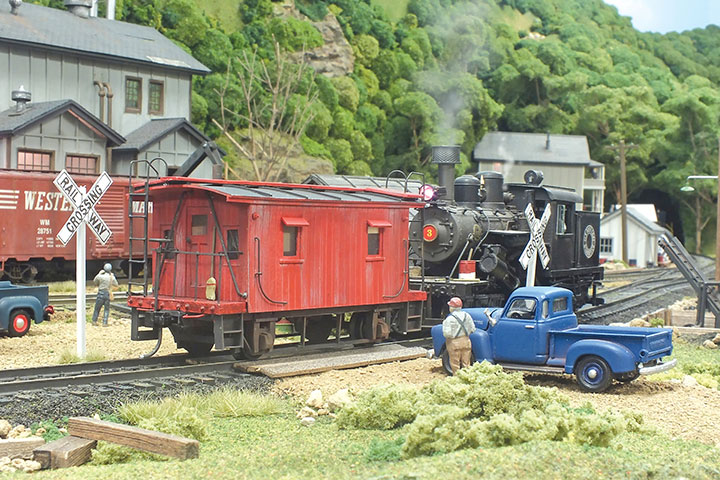
The Raymond Davis Caboose
In the 1950s, the Elk River Coal & Lumber Company (ERC&L) had a modest logging activity in central West Virginia. Logs were hauled from the woods to the company’s sawmill at Swandale, behind 3-truck Shay #19. Theodore Burdette was the engineer of this locomotive, one of the last Shays in regular logging service. But a second locomotive, Climax #3 (c/n 1692), with engineer Raymond Davis at the controls, had important work to do, also. ( I described how I built a model of Climax #3 in the May/June 2015 GAZETTE.) Davis’ train, referred to as the “steel train,” consisted of two or three of the line’s older truss-rod flat cars loaded with ties, spikes and rail. This train and its crew were charged with extending the line further into the woods and picking up track when an area was logged out.
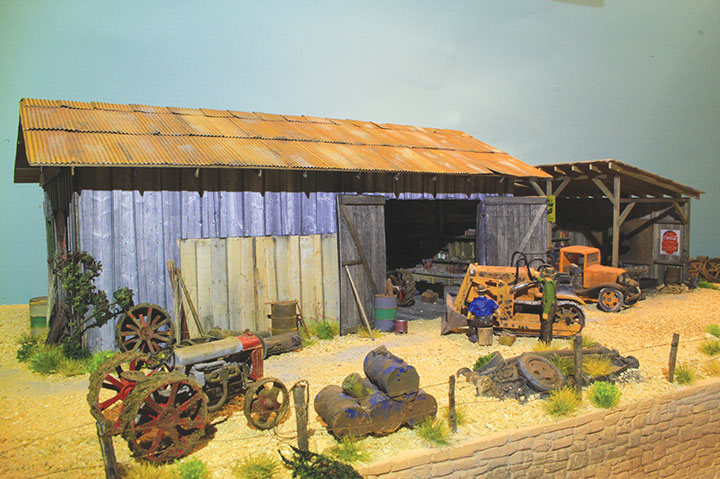
An O Scale Tractor Shed
In 2004, I attended a National Narrow Gauge Convention in Santa Clara, California. The most interesting part for the time was the room with the model manufacturers, and one of them was Paper Creek Model Works (out of business). They sold cardboard kits, designed on the computer and laser processed, so I bought an O scale Randsburg Barbershop kit. After returning home to Germany, I cut out all the parts with a fine knife and glued them together, and later installed the barbershop on my Rio Grande Southern layout.
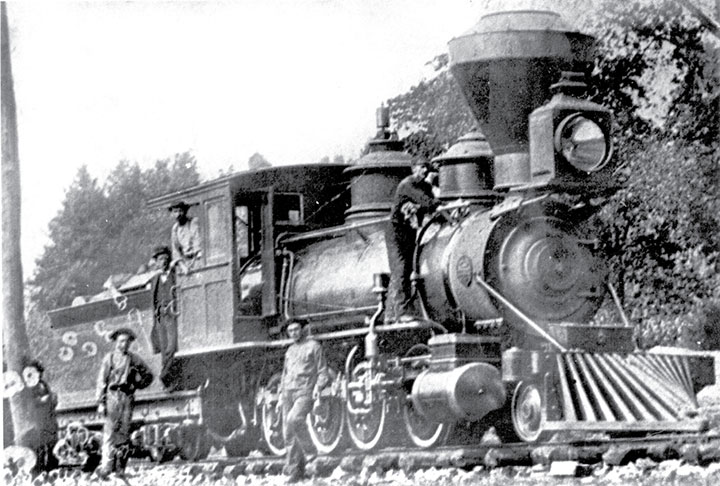
The East Tennessee & Western
Narrow gauge railroads in the 19th Century tended to promote their passenger service above everything else. Brightly varnished passenger cars and shiny locomotives caught the public eye, luring people to ride the trains for fun, excitement, scenery, and for travel. The passenger trains dominated the timetables, but it was the lowly freight trains that made the money necessary for the company to make a profit. The East Tennessee & Western North Carolina was no exception. While the Moguls I described in the September/October issue caught the eye of the camera, it was ET&WNC’s first Consolidation, #3 (UNAKA) that handled the freight trains through the Doe River Gorge to Cranberry.
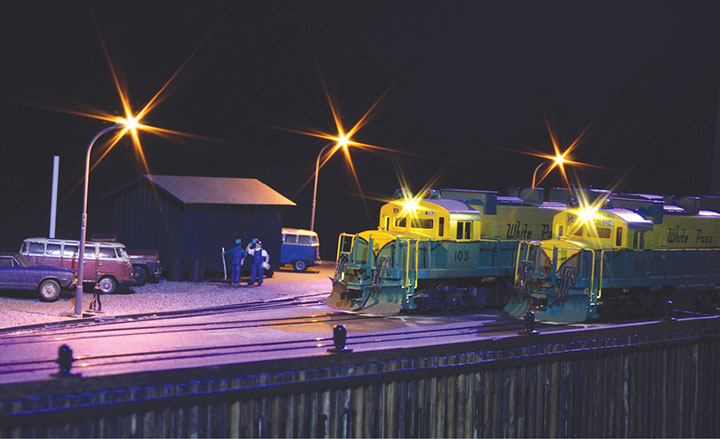
Lighting Up My HOn3 White Pass & Yukon Route
In part one I described how light can be used to direct a viewer’s attention to specific locations on a model railroad. I also discussed recreating natural daylight. In this article I will explore the artistic side of lighting design and its subtle effects on the subconscious mind and its ability to create attention-grabbing visuals. The art of lighting design is one that most of us are exposed to everyday, though when it’s well executed often it slips past our conscious perception. I’ll continue to draw upon the similarities of a theatre’s stage and a model railroad, and how lighting can be better executed in modeling.
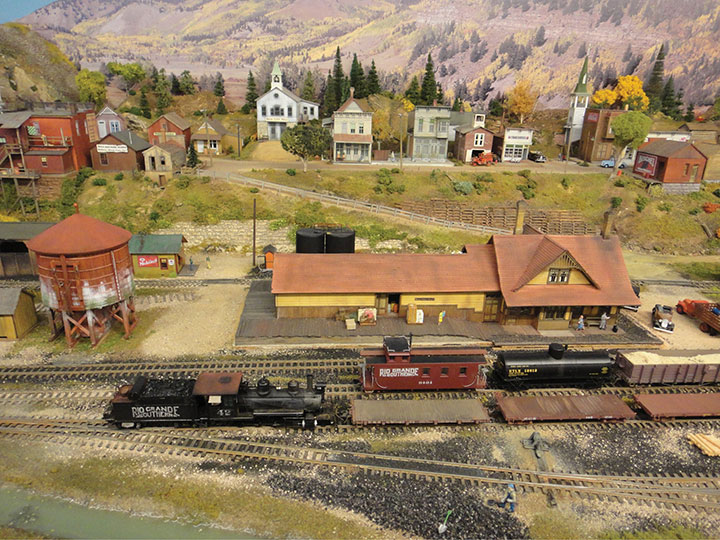
Layout Refinements
I’ve been a fan of the Rio Grande Southern since my first visit to Durango when I was 13. That was also the year I acquired my copy of Beebe and Clegg’s Mixed Train Daily with its superb coverage of things narrow gauge. That’s a long time to be a student of the narrow gauge, and yet I recently discovered something new. I was perusing Volume 7 of The RGS Story from Sundance Ltd. I had read the book several times in the past, but for the first time it hit me that I was missing an interesting pattern of train operations on my layout.
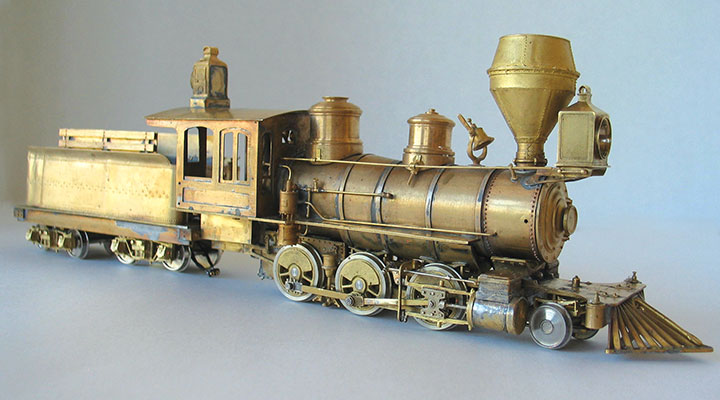
Scratchbuilding Colorado Central #10 for My 0n3 Colorado Central & Southern
The next major step after finishing the cab for Colorado Central #10 is fabricating the domes. I had some Kemtron domes, but they weren’t a close enough match to the prototype, so I decided to turn my own. I’m certainly aware of the many advances in technology that are used in the hobby, especially 3-D printing. So, why do I spend the time and effort turning domes from brass rod? The answer is simple: I enjoy it. It’s immensely satisfying to see the shape of the dome slowly emerge from the brass rod.
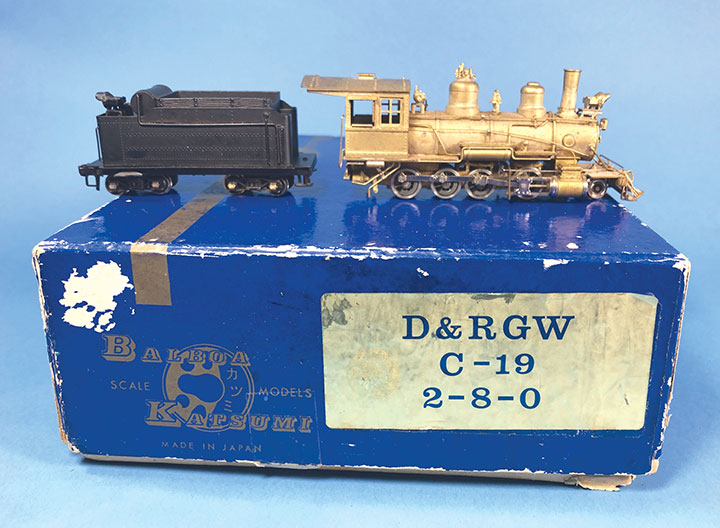
Brass Bashing
It seems to me that today it is difficult to buy an inexpensive HOn3 locomotive. The excellent Blackstone Models K-27 and C-19 are often listed at multiples of their original MSRP. Looking to the brass market, the used models are commanding two and three times the prices they did a few years ago, and thousand dollar price tags are becoming common. To top it off, it’s been a decade or more since Model Die Casting stopped making their inexpensive HOn3 locomotive kits and un-built versions of these kits are rare. Division Point is the last brass importer in HOn3, but their exquisite models are in the $2000.00 range. I can’t help but think how overwhelming it must be for someone on a budget who wants to get into HOn3.

The Narrow Gauge Scene
Until a few years ago, Christmas meant the release of the latest limited edition mega-kits from Fine Scale Miniatures and South River Models, but with the retirement of their owners, the era of the major mega-kit Christmas release seemed over. A mega-kit by my definition is one that offers more than a single structure, and contains either multiple structures or a structure with extra components and details. Mega-kits can include rolling stock, but would have to be fairly impressive to qualify.
